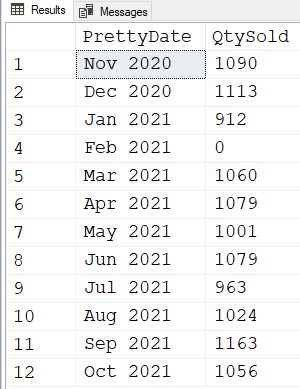Hi
I have some tables with no dates in except Month and Year. These are 2 separate fields called CalenderYear and CalenderYear
Is it possible for me to set them somehow so they look back from todays date back 12 months some how. I have googled and looked for examples but beginning to think it may not be possible.
Any ideas please
Thanks
I have some tables with no dates in except Month and Year. These are 2 separate fields called CalenderYear and CalenderYear
Is it possible for me to set them somehow so they look back from todays date back 12 months some how. I have googled and looked for examples but beginning to think it may not be possible.
Any ideas please
Thanks

